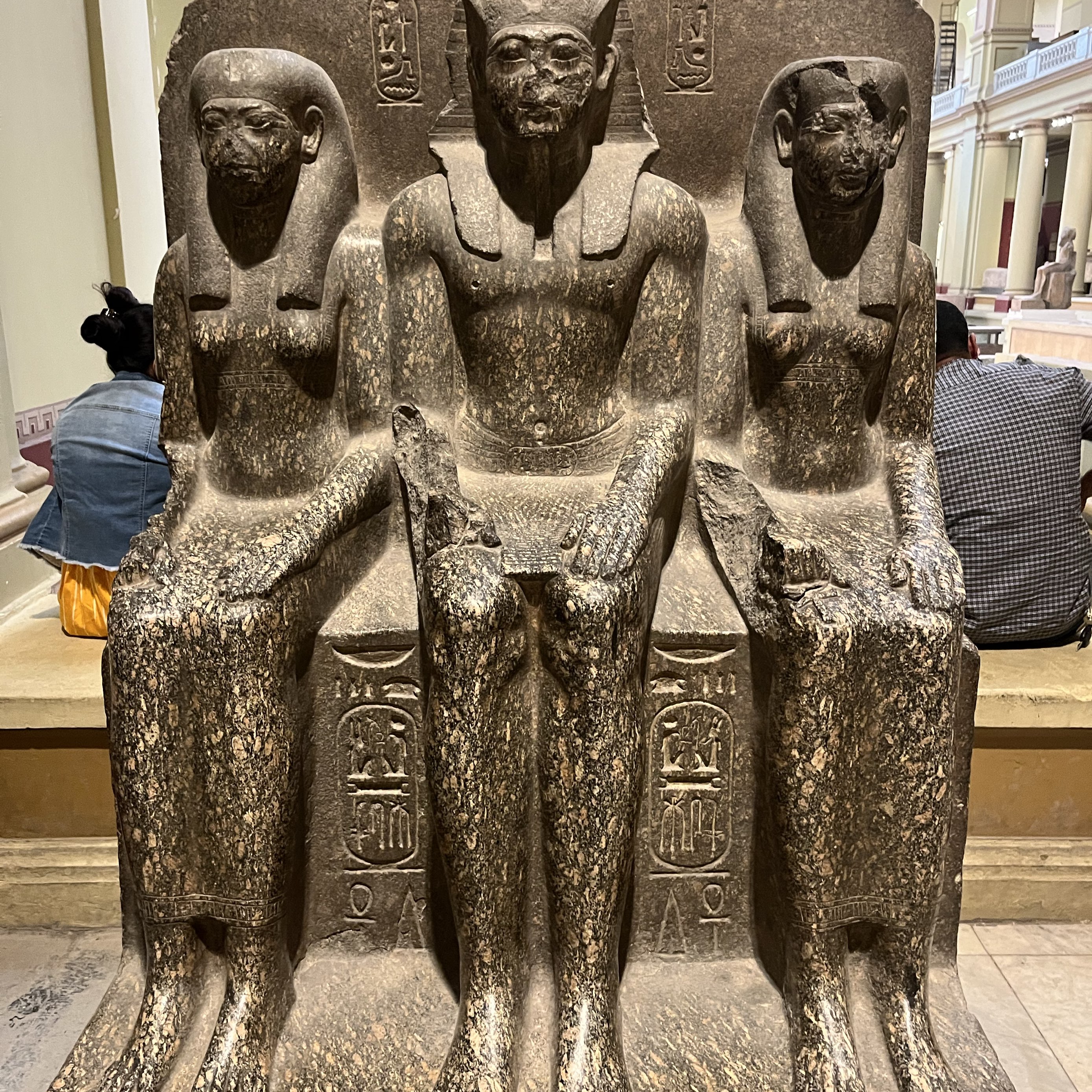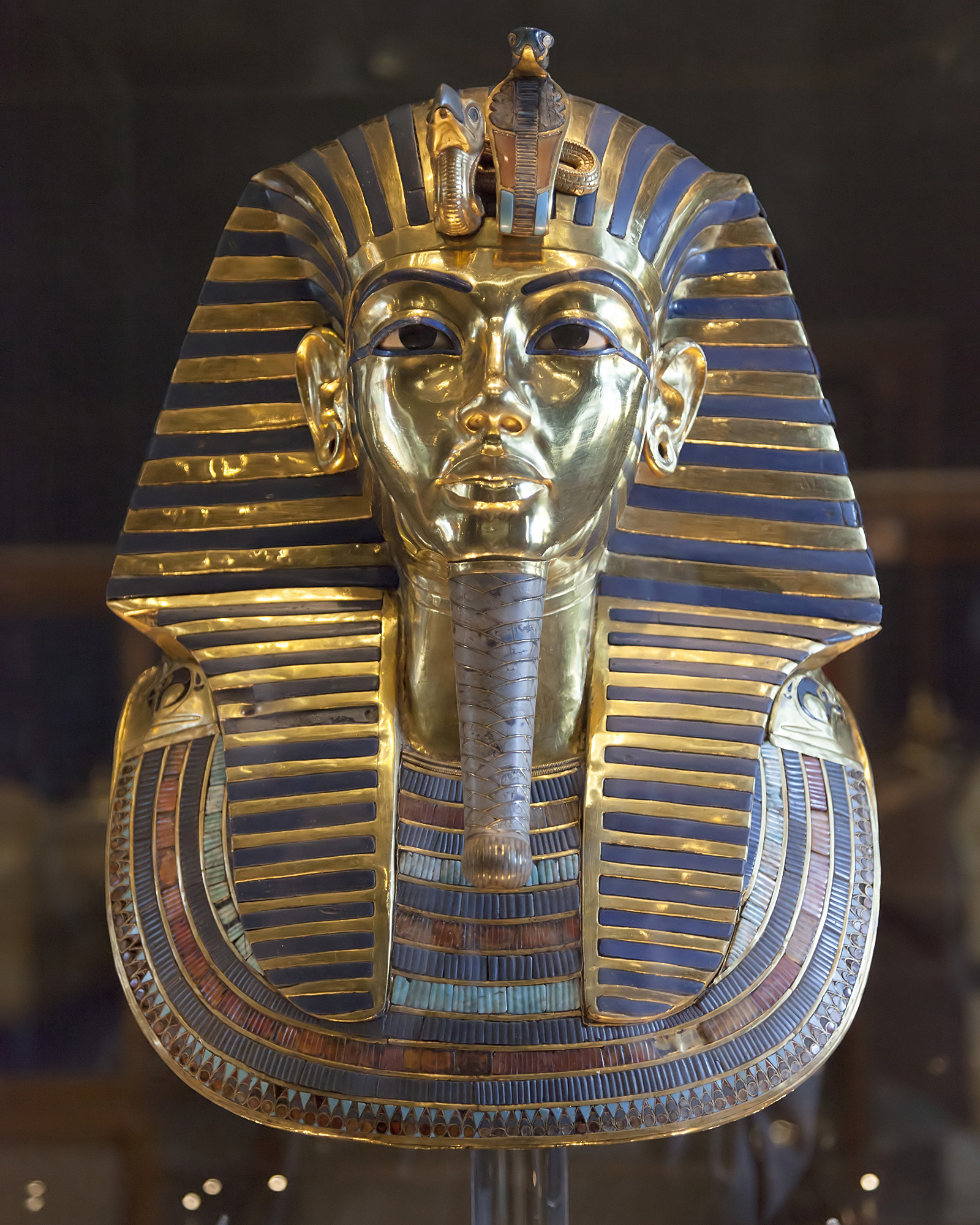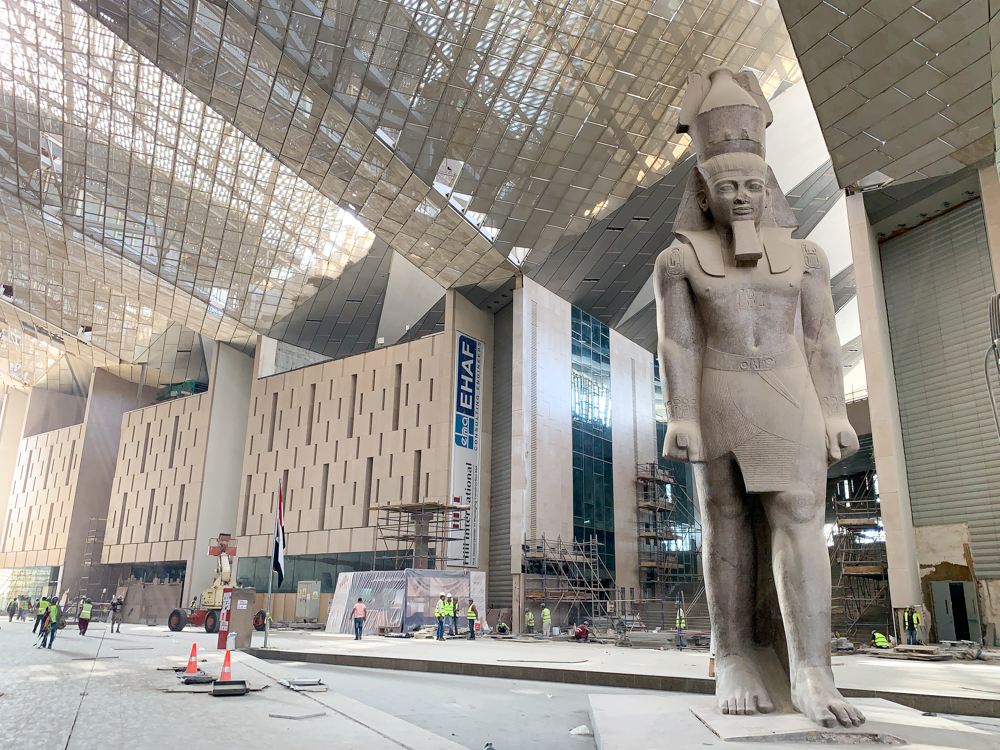The Egyptian Museum in Cairo: A Treasure Trove of Ancient Artifacts
As you step into the immense halls of the Egyptian Museum in Cairo, a wave of awe washes over you. Spread across two floors, thousands of ancient artefacts and art pieces greet you at every turn. From massive statues of pharaohs to intricate jewellery belonging to queens, this museum is an absolute treasure trove of ancient history. Every corner of the building is packed with something fascinating, making it a must-visit destination for history buffs, artists, and adventurers alike. Let's dive in and explore the wonders of the Egyptian Museum.

History of The Egyptian Museum in Cairo
Are you ready for a journey through time? Come and explore the ancient civilization of Egypt at the Egyptian Museum in Cairo! This historic landmark was inaugurated in 1902 and is the oldest archaeological museum in the Middle East, housing the world's largest collection of Pharaonic antiquities. Designed by French architect Marcel Dourgnon, the building was selected through an international competition in 1895 - the first of its kind.
You'll be transported to a different era as you enter the museum. The collection spans from the Predynastic Period to the Greco-Roman Era. The museum boasts an unrivalled collection featuring complete burials of Yuya and Thuya Psusennes I, stunning treasures of Tanis and the Narmer Palette commemorating the unification of Upper and Lower Egypt under one king. The museum also houses splendid statues of the great kings Khufu, Khafre, and Menkaure, builders of the pyramids at the Giza plateau. An extensive collection of papyri, sarcophagi, and jewellery, among other objects, completes this uniquely expansive museum.
While exploring, make sure to keep in mind the photography and visitor guidelines. After paying ticket fees, photography is permitted, except in King Tutankhamen’s Mask Room. However, please refrain from taking photographs of other visitors or staff as it may violate their personal rights. Also, please avoid taking video recordings in galleries unless you have paid the appropriate ticket fees, and refrain from using flash photography.
As you wander, remember that food and drinks are prohibited in galleries except for small water bottles, and smoking is prohibited throughout the museum. Please avoid disorderly, disruptive, and offensive language or actions, and be mindful of others when using your cell phone. Audio players and camera holders are prohibited throughout the museum, and appropriate attire is requested.
Finally, please do not touch any exhibits or showcases, do not lie down on seats or the floor, and do not remove your shoes. Follow all posted signs and visitor instructions, and in times of emergency, like an earthquake or fire, follow the instructions of museum staff.
The Egyptian Museum in Cairo is a true treasure trove of ancient artefacts and an incredible opportunity to learn and explore the rich history of Egypt. Don't forget to bring your sense of wonder and adventure! [1][2]

Largest Collection of Ancient Egyptian Artifacts
Are you ready to uncover the mysteries of ancient Egyptian artefacts? Look no further than the Egyptian Museum in Cairo, home to the world's largest collection of Pharaonic antiquities. As you step into the museum, you'll be greeted by the stunning display of artefacts spanning from the Predynastic Period to the Greco-Roman Era. This historic landmark, designed by French architect Marcel Dourgnon and inaugurated in 1902, features some of the world's most magnificent ancient masterpieces, including the complete burials of Yuya and Thuya Psusennes I, the treasures of Tanis, and Narmer Palette commemorating the unification of Upper and Lower Egypt under one king.
One can't miss the splendid statues of Khufu, Khafre, and Menkaure, the builders of the pyramids at the Giza plateau. And, of course, the funerary masks of Tutankhamun and Queen Nefertiti, the statue of Ramses the Great, and the mummies of some of Egypt's most famous pharaohs are also featured displays. It's a must-see for anyone interested in the history and culture of ancient Egypt.
Visitors are permitted to take private photographs inside the museum, but it's important to note that taking photographs of other visitors or staff may violate their personal rights. Additionally, visitors aren't allowed to eat or drink within the galleries except for small water bottles. Smoking is prohibited throughout the museum, and visitors must avoid touching exhibits or showcases. It's important to refrain from using flash photography and camera holders until after purchasing the appropriate ticket fees.
If you plan to visit with children, it's crucial to accompany them always. And while folding or other forms of transportable seating may seem like a good idea, they should be avoided. Large bags, backpacks, luggage, or parcels larger than 40x40cm aren't permitted in the museum but can be kept in the cloakroom. Unfortunately, there is no room for animals or pets at the museum.
So what are you waiting for? Come and explore the wonders of the Egyptian Museum in Cairo and witness one of the world's greatest collections of ancient Egyptian artefacts. [3][4]

Iconic Artifacts on Display
If you're a history lover, there's no better place to be than the Egyptian Museum in Cairo. Known as the world's largest collection of ancient Egyptian artefacts, the museum is home to some of the most recognizable pieces of Egyptian culture. From the funerary masks of Tutankhamun and Queen Nefertiti to the statue of Ramses the Great and the mummies of some of Egypt's most famous pharaohs, the museum has something for everyone.
The museum is housed in a distinctive pink palace overlooking Cairo's Tahrir Square and has been the premier display of Egyptian artefacts since it opened in 1902. One of the things that makes this museum unique is that visitors are permitted to take private photographs inside the museum by paying a ticket fee. However, photographs of other visitors or staff should be avoided as they may infringe on their privacy.
While visiting, it's important to note that food and beverages are not permitted in the galleries except in small water bottles. Large bags, backpacks, luggage, or parcels larger than 40×40 cm are not allowed inside the museum but can be kept in the cloakroom. You are not allowed to bring pets, and folding or other transportable seating should be avoided.
It's also important to accompany children when they visit the museum. Children can learn a wealth of knowledge here, but they should always stay with an adult. With over 120,000 artefacts, the museum can feel overwhelming at times. The difficulty of navigating some of the exhibits is a common complaint by visitors, so having a guide with you is highly recommended.
The Egyptian Museum is a must-see for anyone interested in the history and culture of ancient Egypt. From the Old Kingdom of Ancient Egypt to the present day, there are artefacts from all over Egypt to explore. No matter your age or interest, this iconic museum has something for everyone. So, pack your bags, grab your camera, and immerse yourself in one of the most fascinating cultures in history! [5][6]

Photography and Visitor Guidelines
Are you planning a trip to Cairo? If so, you definitely can't miss the Egyptian Museum, the oldest archaeological museum in the Middle East and home to the world's largest collection of Pharaonic antiquities. From the Predynastic period to the Greco-Roman era, this museum houses an extensive collection of ancient treasures that will take your breath away.
When it comes to photography and visitor guidelines, please keep in mind that photography (personal use without flash) is permitted throughout the museum, except King Tutankhamun's Mask Room. However, please refrain from taking photographs of other visitors or staff, as it may violate their personal rights. Video recordings (cell phone cameras) in the galleries are also prohibited unless you have paid the appropriate ticket fees.
Suppose you wish to take photographs or video recordings for commercial use (TV, cinema programs, advertising, documentary clips, etc.). In that case, you are permitted to do so only after obtaining permission from the concerned authority and paying the daily rate. Additionally, please refrain from using flash photography and camera holders until after purchasing the appropriate ticket.
For the safety of the exhibits, please do not touch any exhibits or showcases, and avoid using flashlights or laser pointers inside the museum. Food and drinks (except for small water bottles) are also prohibited in the galleries, and smoking is prohibited throughout the museum. Please be mindful of others and be quiet when using your cell phone. Audio players are prohibited throughout the museum, and appropriate attire is requested. Please do not lie down on seats or floors, and do not remove your shoes.
Lastly, in times of emergency, such as an earthquake or fire, please follow the instructions of the museum staff. In an earthquake, please move away from large sculptures, display cases, and other objects that may fall. If you are a student of the art faculties, please conduct yourself respectfully and use only pencils to take notes or sketch.
The Egyptian Museum is a must-see destination for anyone visiting Cairo. With its vast collection of ancient artefacts, you will be transported back in time to witness the glory and wonder of the Pharaonic era. Just remember to follow these guidelines to keep the exhibits and other visitors safe and to ensure that your visit is enjoyable and educational. [7][8]
.jpg)
Restrictions on Food, Bags, and Pets
Are you ready to uncover the mysteries of ancient Egypt? The Egyptian Museum in Cairo is the perfect place to start. With over 5,000 years of history on display, this treasure trove of ancient artefacts is a must-see for anyone interested in the culture and history of this fascinating civilization. The museum has everything from funerary masks of pharaohs like Tutankhamun and Queen Nefertiti to the mummies of some of Egypt's most famous rulers.
But before you plan your visit, there are a few restrictions you need to be aware of. For your safety and the preservation of the artefacts, you are not allowed to bring food or drinks into the galleries except for small water bottles. You cannot bring large bags, backpacks, luggage, or parcels larger than 40x40cm, but the cloakroom will keep them safe for you. And unfortunately, pets are not permitted inside the museum.
It's important to note that an adult must accompany all children during their visit. This is not only for their safety but also to ensure you are ready to explore the world of ancient Egypt. Then a visit to the Egyptian Museum in Cairo is a must! This museum houses the world's largest collection of ancient Egyptian artefacts, showcasing over 5000 years of rich history. While photography is allowed for a fee, visitors are prohibited from taking photos of other visitors or staff to respect their privacy. It's also important to note that food and beverages are not permitted in the galleries, except for small water bottles. Additionally, large bags, backpacks, and luggage larger than 40x40cm are not allowed inside but can be safely stored in the cloakroom.
Another restriction to remember is that pets are prohibited inside the museum, so leave them at home. And while children are more than welcome to visit, they must be accompanied by an adult. Folding or transportable seating is also not allowed, but plenty of benches and seating areas are available throughout the museum.
Despite these restrictions, visiting the museum is well worth it to experience the wonder and beauty of ancient Egypt. Among the must-see artefacts on display are the funerary masks of Tutankhamun and Queen Nefertiti, the statue of Ramses the Great, and the mummies of some of Egypt's most famous pharaohs. You'll also find artefacts from various periods in Egyptian history, including the Old, Middle, and New Kingdoms.
As you walk through the museum, you'll be transported to another time and place, marvelling at this ancient civilisation's impressive craftsmanship and rich history. So if you're planning a trip to Cairo, make sure to add the Egyptian Museum to your itinerary and immerse yourself in the wonders of ancient Egypt. [9][10]

Importance of Accompanying Children
Are you planning a trip to Cairo anytime soon? Do you want to explore the rich history and culture of ancient Egypt? Then you cannot miss the Egyptian Museum. A treasure trove of ancient artefacts, this museum houses the world's largest collection of ancient Egyptian artefacts. You'll be amazed by the range and diversity of artefacts here, from the funerary masks of Tutankhamun and Queen Nefertiti to the mummies of some of Egypt's most famous pharaohs.
But if you're planning a family trip, remember that all children must be accompanied by an adult when visiting the museum. Ensuring the kids are safe and well-behaved while exploring the exhibits is important. And while you're here, don't forget to follow the rules – no large bags or backpacks, no smoking, no food or drinks in the galleries, and no touching the exhibits or showcases.
Apart from the ancient Egyptian artefacts on display, the museum houses a vast collection of Pharaonic antiquities from the Predynastic Period to the Greco-Roman Era. The exquisite statues of the great kings Khufu, Khafre, and Menkaure are among the most popular exhibits here, along with the complete burials of Yuya and Thuya Psusennes I and the treasure of Tanis and the Narmer Palette.
To ensure that you get the best experience here, make sure that you book your tickets in advance and arrive early to avoid crowds. And remember, while taking private photographs inside the museum is permitted if you pay the fee, please refrain from taking photographs of other visitors or staff as it may be considered an infringement on their privacy.
So if you're a history buff and want to explore the rich legacy of ancient Egypt, the Egyptian Museum in Cairo is a must-visit destination. Don't forget to bring your sense of wonder and curiosity with you; you'll need it to appreciate the remarkable collection of antiquities on display here fully. [11][12]
